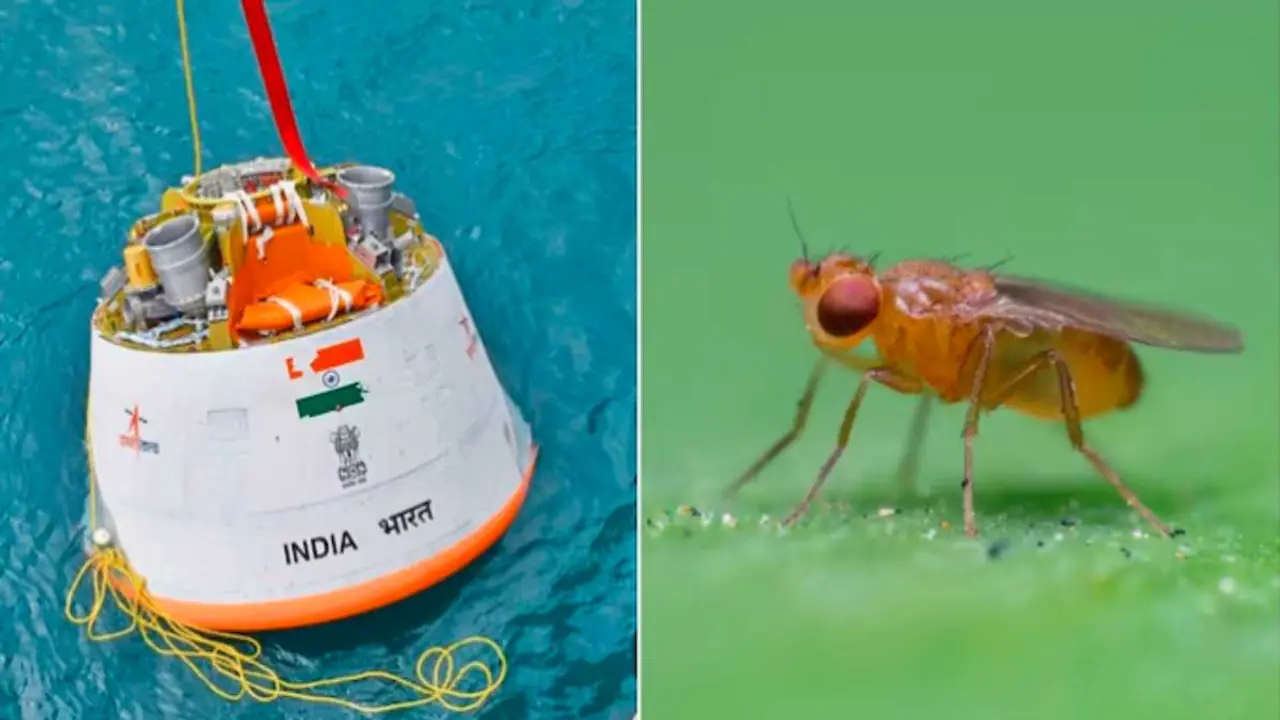India’s Gaganyaan mission, led by the Indian Space Research Organisation (ISRO), is not only a significant milestone for the country’s space exploration ambitions but also a groundbreaking opportunity to enhance our understanding of human health in space. Alongside astronauts, 20 fruit flies will embark on this historic journey, playing a key role in health research that could benefit both astronauts and those of us on Earth.
India's Leap into Human Spaceflight
The Gaganyaan mission marks India's entry into the elite group of nations capable of human spaceflight. This ambitious project, designed to carry astronauts to low Earth orbit, isn't just about advancing space technology—it also involves critical scientific experiments that promise to uncover new insights into human physiology.
Why Fruit Flies?
While often overlooked, fruit flies are far from insignificant. These tiny creatures, scientifically known as *Drosophila melanogaster*, share about 77% of their genes with humans, making them perfect subjects for studying genetic and physiological responses to space conditions. Their rapid life cycle and well-documented genetic makeup have long made them a staple in scientific research. By sending these miniature explorers into space, researchers hope to uncover key data about how space conditions, like microgravity, impact human health.
The Mission’s Focus: Kidney Stones in Space
One of the primary goals of this mission is to study kidney stone formation in space, a significant health concern for astronauts on long-term missions. Microgravity affects fluid and mineral distribution in the body, which can lead to an increased risk of kidney stones. By observing how fruit flies react to these changes, scientists hope to gain insights that will help prevent this issue both in space and on Earth. This experiment, chosen from over 75 proposals, is a collaboration between UAS-Dharwad and the Indian Institute of Space Science and Technology.
Real-World Applications
The research could lead to groundbreaking advancements in the understanding and prevention of kidney stones. Not only will astronauts benefit from reduced health risks on future missions, but findings could also inform treatments and prevention methods for kidney stones here on Earth. This dual impact highlights the broader importance of space research in improving healthcare for all.
The Gaganyaan Spacecraft
While the primary focus of the mission is biological research, the Gaganyaan spacecraft itself is a remarkable feat of engineering. India’s first manned mission includes an indigenous orbital module that will carry astronauts safely to low Earth orbit. Beyond its technical capabilities, Gaganyaan is also designed with sustainability in mind, featuring reusable components that reduce environmental impact.
The Growing Role of Biotech in Space
As space exploration accelerates, the biotech and life sciences industries are also making significant strides. Research into space health is not only vital for future missions but could also lead to innovations in treating and preventing health issues like kidney stones, muscle atrophy, and bone decalcification. With space exploration expected to reach new heights, the market for space-related biomedical research is poised for substantial growth, with an estimated value of USD 40 billion by 2027.
Challenges and Opportunities
While the research holds great promise, there are challenges to overcome. Space studies, especially those involving biological research, can be costly and complex. Additionally, while fruit flies provide valuable data, they may not fully replicate the human experience in space. However, the insights gained from these tiny heroes could pave the way for future, more detailed studies using other models, such as humans themselves.
The Gaganyaan mission is a testament to India’s advancements in space exploration, with a focus not only on the technical achievements of space travel but also on improving the health and safety of astronauts. The inclusion of fruit flies as research subjects demonstrates the value of thinking beyond the ordinary—using the smallest creatures to tackle some of the greatest challenges of space travel.
